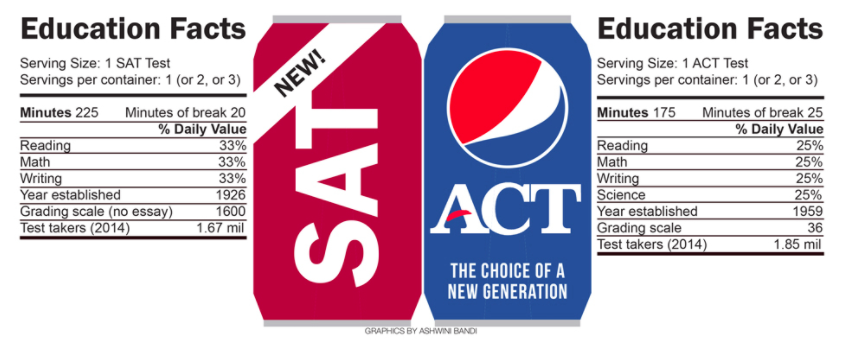Most little kids tend to fantasize about their teenage years, daydreaming about the future as if it’ll be the same as any coming-of-age movie revolving around young love, and adventure. Myself included. A much younger version of me wholeheartedly believed that my high school years would mostly be spent going out until ungodly hours and having fun. Presently, I am now aware that I was misled. Who wants to watch a character deal with a struggle like that, instead of some summer fling turned romance though? Typically, TV shows and movies glorify the teenage experience, setting unrealistic expectations, and making it sort of disappointing when you finally get there. Regardless, it may be what you make it. However, choosing a path to go on that is meant to decide the rest of your future isn’t easy, or necessarily considered to be ‘fun’.
With heavenly expectations in mind, when sophomore me got to experience high school after Covid, it’s safe to say that she was bummed. What a letdown. There’s way more stress and nights spent studying, and way less going out and about, and soaking up these last few years before college. And then, when this school year rolled around, and I officially entered junior year, I was once again slapped by reality. And it mercilessly struck me. I came to realize that things are getting real. Sure, beforehand I was aware that things were getting serious, but as the school year flies by it’s all approaching me frighteningly fast.
Looking into colleges is especially daunting. While accumulating a list of universities that I’d like to apply to, I noted that I’d either need to take the SAT or an ACT since most require a score from one of the two exams. Although taking both is an option, it was ruled out from the get-go. Now it’s down to, “which one do I go for?” After talking to some friends of mine I concluded that other students are also asking themselves that same question. As well as, “what’s the difference?” If you’ve asked yourself both of these
questions, then this article is for you, since I will be detailing exactly that. Let’s compare the SAT and the ACT, shall we? The SAT, an acronym for the ‘Scholastic Aptitude Test’, is a standardized test widely used for college admissions in the United States. The exam itself is split into three parts: The Reading Test, The Writing and Language Test, and the Math Test. As you can tell, it’s English-heavy. According to the College Board website, when taking the reading portion of it a student is given sixty-five minutes to complete it, and there are fifty-two questions. As for the writing and language part of it, students are given thirty-five minutes to complete all forty-four questions. Lastly, for the math segment of it, all students are given eighty minutes to answer all fifty-eight questions. That’s a grand total of one hundred eighty minutes and one hundred fifty-four questions. Since most of the questions are multiple-choice, and not written responses, it’s recommended that you guess instead of leaving a question blank since a penalty isn’t dished out for an answer that’s given; even if it’s not correct or definitive.
From there, the website even breaks down each category for you. First up, the Reading Test. What are the Reading Test Passages like? What should someone expect? First off, there are five passages altogether. Four standalone passages and one pair of passages that are read together. Those have a word count of 500-750 words. One literary passage is a work of fiction. One or two are sampled from a founding document, like the U.S. Constitution, or a text from a Great Global conversation, like equality. An example of this is a snippet from an essay collection by Gloria Steinem. There’s also a passage from a work of social science and two passages from scientific works, such as Earth science or biology.
The second category is The Writing and Language Test. It’s thirty-five minutes long and includes four passages and forty-four multiple-choice questions. Overall, it’s an entirely multiple-choice test where you read passages and then find and fix mistakes and
weaknesses within those pieces of writing. Each of the four passages are 400-450 words long, and their complexity varies. Some are more challenging than others. The topics of those readings extend from careers to humanities or science. Like their difficulty, the purpose and the format of each passage vary. At least one is a narrative, and the others are either argumentative, informative, or explanatory. Moreover, some of the passages utilize charts, graphs, or infographics to help students interpret what they’re reading.
As for the questions, each passage has eleven questions, and those questions stand under two umbrellas. The first umbrella houses questions where a student is meant to improve the expression of ideas. Meanwhile, the second umbrella covers questions where a student has to recognize and correct errors in sentence structure, grammar, usage, and punctuation. The ‘expression of ideas’ portion can be divided into three types of questions: ‘Development’, ‘Organization’, and ‘Effective Language Use’. ‘Development’ questions are about main ideas, such as topic sentences and thesis statements. Organizational questions have to do with a focus on logical sequence and placement of information and ideas, as well as effective introductions, conclusions, and transitions. Lastly, ‘Effective Language Use’ questions ask students to improve precision and eliminate wordiness. They also ask students to consider styles and tone and combine sentences to improve flow and achieve particular rhetorical effects, (like emphasizing one point over another).
Moving away from the English portion of the SAT, the SAT also has a math section. The Math Test is allegedly designed to focus on areas of math that typically play a big role in college and career success. So, that reduces to three categories. The ‘Heart of Algebra’, ‘Problem Solving and Data Analysis’, and a brief ‘Passport to Advanced Math’. However, the SAT does draw on other math topics including geometry and trigonometry since
they’re the most relevant to college and career readiness. The algebraic questions focus on the master of linear equations and systems, while the ‘Problem Solving and Data Analysis’ part of it is about being quantitatively literate. Thirdly, the brief touch on advanced math features questions that require the manipulation of complex equations. Also, in case you’re wondering, the no-calculator portion is twenty-five minutes long with a total of twenty questions, and the portion where using a calculator is permitted is fifty-five minutes long with thirty-eight questions in total. Combined, there are forty-five multiple-choice questions and thirteen grid-in questions. Furthermore, there are nineteen total algebraic questions, seventeen ‘problem solving and data analysis’ questions, sixteen advanced math problems, and six questions for additional topics in math.
CollegeBoard, a mission-driven non-profit organization that’s goal is to connect students to college success and opportunity, partnered with Khan Academy to create an official SAT Practice schedule tailored to your needs based off of your academic strengths and weaknesses and your most recent PSAT score. Through that resource, you can set specific times and dates to take a practice exam, and specific times and days of the week throughout the months leading up to your scheduled SAT exam, where you can study from fifteen minutes to a few hours. Already feeling like the SAT is for you? Well, that’s great! There are still some testing slots available to take the SAT in the coming months, like May. Just go onto your internet browser and search up, “SAT registration college board”. The first link should be it, and then from there, you can schedule a testing day. Just keep in mind that there’s a sixty-dollar fee upon registration.
Perhaps you just sped through the SAT portion of this article and decided that the SAT just isn’t for you, that’s okay! There’s still another option, the ACT, (also known as the ‘‘American College Test’). Unlike the SAT, the ACT has a third subject included,
science. If you’re good at science, then this may be the exam for you! Not only does it measure your science skills, but it also takes your STEM score into account, determining if you’re ready for a STEM major. A score like that can help to determine where you are, and what you need to do to be ready for college if you plan on majoring in science, mathematics, technology, or engineering in college. Other than science, the ACT also includes English, math, and reading like the SAT. (You can also take an optional writing test!) However, unlike the SAT, the score range is from 1 to 36. On the SAT, the score ranges from 200-800 for each section and 400-1600 for a sum of the two section scores, (everything English and math).
The ACT English Test. For this section of the exam, every test taker is put in the position of a writer, who makes decisions to revise and edit a test. From what I gathered, it’s just a bunch of short texts and essays that provide students with rhetorical questions to answer. To be exact, there are seventy-five questions that must be answered in forty-five minutes. Also, passages are said to be chosen for their appropriateness in assessing writing and language skills and to reflect students’ interests and experiences. If for some reason you don’t know an answer, (and this goes for all sections in the ACT), then it’s better to guess instead of leaving it blank, because when you guess there’s no penalty just like the SAT.
Alright, second up is the ACT Reading Test. The ACT Reading Test measures every test taker’s ability to read closely, read logically about texts using evidence, and integrate information from multiple sources. The questions focus on the supportive skills that students must bring to bear in written materials across a range of subject areas. Questions will ask students to determine the main idea; locate and interpret significant details; understand sequences of events; make comparisons; compare cause-effect relationships; determine the meaning of context-dependent
words, phrases, and statements; draw generalizations; analyze the author’s or narrator’s voice and method; analyze claims and evidence in arguments; and integrate information from multiple texts. Keep in mind that the average ACT Reading Test contains forty questions to be answered in thirty-five minutes.
On the topic of the English language, the optional ACT writing test is an essay test that measures writing skills taught in high school English classes and entry-level college composition courses. The test consists of one writing prompt that describes a complex issue and provides three different perspectives on the issue. You are asked to read the prompt and write an essay in which you develop your own perspective on the issue. Your essay must analyze the relationship between your own perspective and one or more other perspectives. You may adopt one of the perspectives given in the prompt as your own, or you may introduce one that is completely different from those given. The ACT writing test is a 40-minute long essay test.
And now, onto science! The ACT science test measures the interpretation, analysis, evaluation, reasoning, and problem-solving skills required in the natural sciences. The test presents several authentic scientific scenarios, each followed by a number of multiple-choice test questions. The content of the test includes biology, chemistry, Earth/space sciences (e.g., geology, astronomy, and meteorology), and physics. The questions require you to recognize and understand the basic features of, and concepts related to, the provided information; to examine critically the relationship between the information provided and the conclusions drawn or hypotheses developed; and to generalize from given information to gain new information, draw conclusions, or make predictions. Students get thirty-five minutes to answer forty questions.
Overall, there are relatively small differences between the ACT and the SAT. Those being that the ACT has an optional writing test
and a science section. There’s also the difference in the scoring system, specifically the range difference. Once again, On the SAT, the score ranges from 200-800 for each section and 400-1600 for a sum of the two section scores, (everything English and math). As for the ACT, like I stated not too long ago, the composite and individual test score range is from 1 to 36. Another small difference is of course how many questions there are per section and the time that you get to complete each section. The ACT has more questions, with less time per question. The SAT questions are fewer in number but are more challenging and require more time to answer.
All in all, choosing to take the ACT over the SAT and vice versa is entirely up to each individual. In my opinion, there are pros and cons to both, so it’s all about preference, and which one you think you’ll do the best on. I hope that at least one person out there reading this article has gained some knowledge, and has a better understanding of each exam, or even better; knows which one they want to sign up for and take! Like I stated earlier, if you’d like to register to take the SAT, you can do that through the CollegeBoard website. As for the ACT, that can be done through ‘www.act.org’.
Sources cited:
“ACT.” The ACT Test, www.act.org/content/act/en/products-and-services/the-act/ registration.html. Accessed 1 Jan. 2023.
“ACT Vs. SAT.” The Act Test, www.act.org/content/dam/act/unsecured/documents/ 2019/8-Reasons-ACT-Over-SAT.pdf.
“What’s on the SAT?” CollegeBoard, https://satsuite.collegeboard.org/sat/whats-on-the-test



